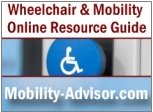Adjusting to Your CPAP Mask
Wearing a CPAP mask at night can help sleep apnea sufferers reduce their risk of serious health issues, including heart problems and stroke, which are associated with this potentially life-threatening sleep disorder.
People with sleep apnea stop breathing frequently during sleep when their airways become blocked. This causes oxygen deprivation. They briefly wake up – often unknowingly – gasping for breath only to fall back asleep within seconds and repeat the cycle throughout the night.
Breathing therapy using CPAP (continuous positive airway pressure) equipment is the most frequently prescribed treatment to help people alleviate their symptoms. The mask is attached to a flexible hose that connects to a small CPAP machine that drives the air through the mask and keeps your airways open .
While wearing a CPAP mask at night can effective address symptoms, many people have a hard time adjusting to the feel of the masks and find them uncomfortable. Yet, the CPAP equipment and mask can literally save your life.
There are a variety of models from which to choose and masks come in different sizes, shapes and materials to address individual needs. Yet, finding the right mask you can easily tolerate during sleep is essential.
Here are the common issues people have with their CPAP face masks... and what you can do to address any problems that arise.
Claustrophobia - Initially, your mask may feel strange and uncomfortable. To help you get used to wearing it, you may want to wear it for a few hours while you are awake. Then, keep it on for as long as you can comfortably wear it the first few nights. Then, increase the duration of each night.
Make sure your CPAP mask straps are adjusted to a comfortable fit and are not too tight. Anti-anxiety drugs may help if wearing the mask seems unbearable; ask your doctor if this option is for you.
Nose Blockage or Irritation - CPAP machine air is very dry and may irritate your nasal areas causing dripping, sneezing, or stinging. You may also experience a bit of bleeding from your nose.
That's why many machines have a built in humidifier, which can help significantly with these symptoms. If your machine doesn't have this feature, you may want to considering replacing it with one that does. Also, lubricating nasal sprays may help.
Poor Fit, Lost Air Pressure - Some masks cover just your nose; while other CPAP masks are designed to be worn over your nose and mouth. Your physician will prescribe the type of CPAP mask you need for your condition. The good news is that there are a wide range of designs from which to choose. The key is to find a mask that feels comfortable and fits well night after night.
If you suspect air is escaping, make sure that facial hair like beards and mustaches aren't getting in the way. Also, dirty oily skin may prevent the seal from being air tight. If your mask loses air, then treatment is compromised. Paying attention to your facial hygiene at night can help increase the effectiveness of your therapy and protect our health.
Frustration - It can be discouraging when the CPAP machine interrupts your night rather than you sleep better and alleviate your symptoms. Try to remember the positive aspects of treatment and do everything you can to stick to it.
Consider keeping a sleep diary and record if headaches lessen or you feel less tired in the morning. If your sleep apnea is not improving, let your doctor know and look into other options for treatment.
Breathing Problems - CPAP equipment helps relieve sleep apnea by keeping your airways open. Yet, if for some reason you can't breathe through your nose, then the therapy may ineffective.
Talk with your doctor about your situation. Over-the-counter medication to help with cold and allergy symptoms may help if you are congested. Surgery may be needed if there is an underlying problem with your nasal passages.
Stomach Bloating - You should not experience an excess of air in your stomach while using the machine. Flatten your sleeping alignment so that air is not blocked in the throat. Try using only one pillow at night and make sure your air flow is not set to high.
Annoying Sounds - Older CPAP models can have a distinct humming sound or vibration that can keep you awake at night. Place the machine as far away from you as physically possible if it is disturbing your ability to sleep. Newer models are much quieter and may be an option you need to consider.
Tubing Interference - Knocking or tangling the tube that connects the CPAP mask to the machine can be annoying and disruptive to sleep. The more you use your CPAP equipment the easier it will be to sleep with. Consider getting a specially designed CPAP pillow that is contoured for the tubing or use a soft blanket to position the tubing so you can sleep.
Remember that CPAP therapy helps with your symptoms. It doesn’t cure your condition so you may need to wear your mask every night for a long time. That’s why it is essential to find the right mask with the right fit – and where it consistently.
Source: Written by Steve Miller. of the Sleeping Disorders Help Blog
Related Information - CPAP Mask
More About CPAP Mask Types
CPAP Machine
About Sleep Apnea
Share Sleep Tips Do you have a great tip to share with others who are struggling with sleep? What works for you might help someone else. |



